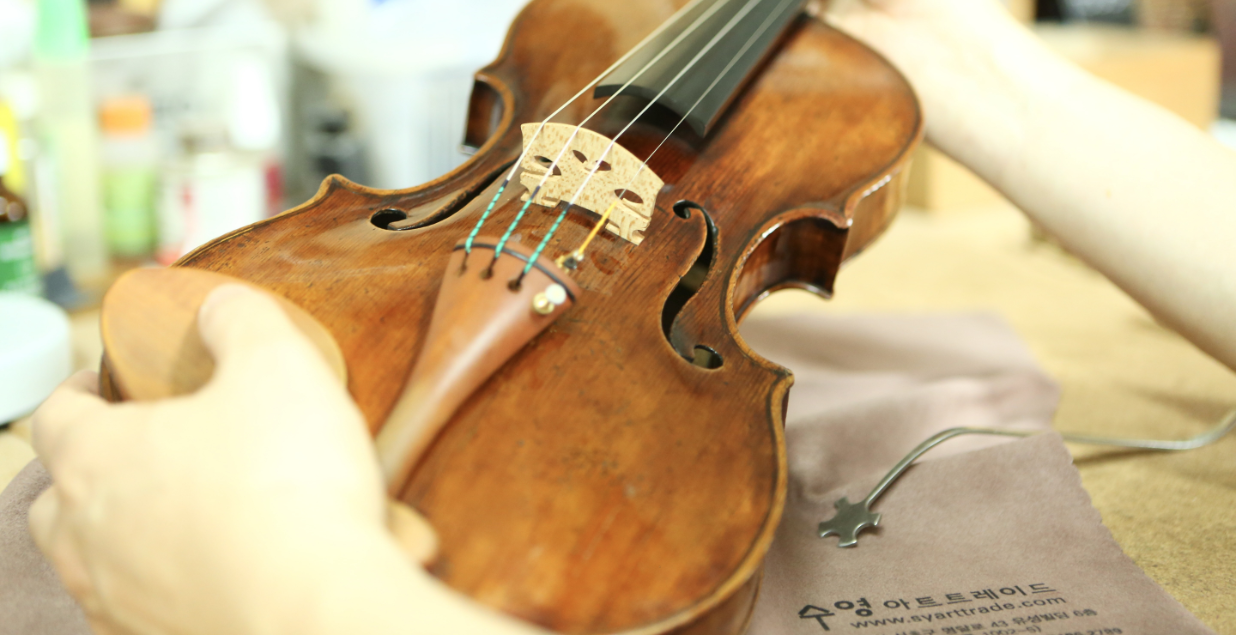About Us
For many years, I have been asked by many performers and students what to consider the most when buying musical instruments. Every time, I ask back, “What is the purpose of buying a musical instrument? Is it for collection or good performance?” Most say it is for good performance. Then I answer without hesitation. "Then sound!"
The real value of an instrument lies in sound. Those who collect musical instruments as relics will consider historical significance more important, but those who play on stage will expect them to make excellent sounds.
Musical instruments have been made by numerous craftsmen with various models and methods for a long time, and you can get a rough overview of them through books and research.
However, not all models of craftsmen can be included in the book. Since there are so many craftsmen and the range of instruments so wide, it is not easy to specify all of them. Of all those instruments, the fact that highly regarded instruments for their sound are chosen by great performers in Europe and the United States proves what the essence of instruments are to the performer.
Musical instruments can be specified through a process called “evaluation”, but sometimes many forget the value of sound, evaluating for “evaluation’s” sake and sale. There are ideal cases where evaluation and sounds go together, but there are many cases that do not, and even if there is an evaluation, the instrument may not be completely specific.
A good evaluation is a reference to gauging the historical value of instruments. But sound as a value is another matter. There are instruments that couldn't withstand the weight of the accumulated years. In this situation, it is obvious what the performers and students should focus on. Especially those who practice basic techniques, sound is more important.
Musical instruments that have lost their sound may become “exhibited” antiques, but they cannot be 'played'. The instrument clearly has its own grade, which the evaluation cannot replace, and the sound and the tinkering are self- evident. Then, what instrument does a performer need, not a collector?
The answer to this question is Sooyoung Art Trade's belief. We will continue to approach the essence of playing instruments with sound.
Sooyoung Art Trade has sound. Now I wait for you to play this beautiful sound with your music.
Sooyoung Art Trade History
Sooyoung Art Trade is located in Bangbae-dong, Seoul, and has been working as a collector and dealer of old and modern violin for nearly 30 years. We have mainly been collecting violins and violin bows, among them are G. Guarneri, J.B. Guadagnini, D. Montagnana, and M. Goffriller.
Some of Sooyoung Art Trade's collections have won first place or others in the following events and more:
- - KBS KEPCO Music Competition
- - Yehudi Menuhin International Competition for young Violinist
- - Shinhan Music Award
- - The Tibor Varga International violin competition
- - Dong-A Music Competition
- - Moscow International David Oistrakh Violin Competition
- - Joongang Music Concours
- - George Enescu Competition
- - Ewha-Kyunghyang Concours
- - International Competition for Violin Kloster Schontal
- - International Jean Sibelius Violin Competition
- - Stulberg International String Competition
- - Joseph Joachim International Violin Competition Hannover
We are still working with the best dealers and collectors in the world and working to perfect our collection.
If you visit Sooyoung Art Trade, professional violin staff will help you find the sound you want.





